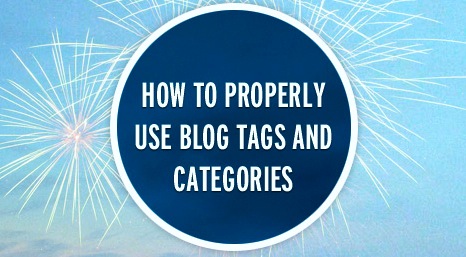Maintaining a blog that is well-organized and easy to use not only attracts more visitors, but it allows people to focus on your message rather wasting time trying to find what they're looking for. Last week, in Part I of our Blogs vs. Categories series, we broke down the main differences between these two frequently misunderstood blog terms. (Check it out if you need a refresher.) Today, we'll dig a little deeper into why the correct use of tags and categories is so important to your blog, and outline some of the best practices for putting them to use.
 Once you have a solid understanding of tags and categories, you'll need to create an organized system internally so as not to confuse both readers and contributors. For example, if you manage a corporate blog, there may be 10, 20, or up to 100+ authors on a weekly basis. Contributors to your site need to be aware of how you organize your tags and categories for site-wide consistency. Not only will this help readers navigate more easily through content, but you won't need to worry about going back to correct errors.
Once you have a solid understanding of tags and categories, you'll need to create an organized system internally so as not to confuse both readers and contributors. For example, if you manage a corporate blog, there may be 10, 20, or up to 100+ authors on a weekly basis. Contributors to your site need to be aware of how you organize your tags and categories for site-wide consistency. Not only will this help readers navigate more easily through content, but you won't need to worry about going back to correct errors.
Tags and categories are also crucial when it comes to SEO because both affect the visibility of your blog in a search engine's “natural” or “organic” search results. Here are four things to keep in mind:
- Original Content/Pages: One thing to remember about search engines is that they recognize similar terms. So if you tag a blog post with five terms that are essentially synonymous with your categories, you'll be creating the same index and archive pages. To the search engine, these will be seen as duplicate pages and will be marked with a duplication penalty, severely cutting down on the visibility of your content and, in some cases, making them worthless. So be sure to differentiate your index and archive pages.
- Link Juice and Link Bleeding: If you've never heard of these terms before, Link Juice refers to the strength of your links (those that direct to valuable, relevant content), and it drives up your rankings, as well as the number of visitors to your site. Link bleeding, on the other hand, refers to a decrease in link value by having too many outside links that direct to worthless pages–like contact pages or about pages–sending people away from your own original content. The more links on a webpage, the less total value each possesses, so be sure to keep links strong and don't overuse them. Adding nofollow tags to your category and tag widget links can also prevent the bleed and add more link value to the more important links on your page.
-
 Best Links are Relevant Links in Content: As an extention to #2, linking inside a blog article holds value with search engines, and using links that are relevant to your tags will help rank your content better. Be sure that your links and tags relate well to the topics you are writing about.
Best Links are Relevant Links in Content: As an extention to #2, linking inside a blog article holds value with search engines, and using links that are relevant to your tags will help rank your content better. Be sure that your links and tags relate well to the topics you are writing about. - Category and Tag Pages Can Rank Well: Typically, search engines are surveying blog content much more frequently than the rest of your site because there is new content is being created at a much faster rate. Be sure to take advantage of this by using tags and categories effectively. Remember the difference between the two and link every post to its proper category to create an internal linking structure. Soon, you'll notice that the pages you've tagged and categorized will rank much higher than other pages on your site.
Keeping these tips in mind will ensure that your pages are maintaining high rankings and that your content is being optimized, bringing more value to your site long-term. So take the time now to create a structure for tags and categories. Focus on usability and ease of navigation, and you'll reap the rewards in time.


